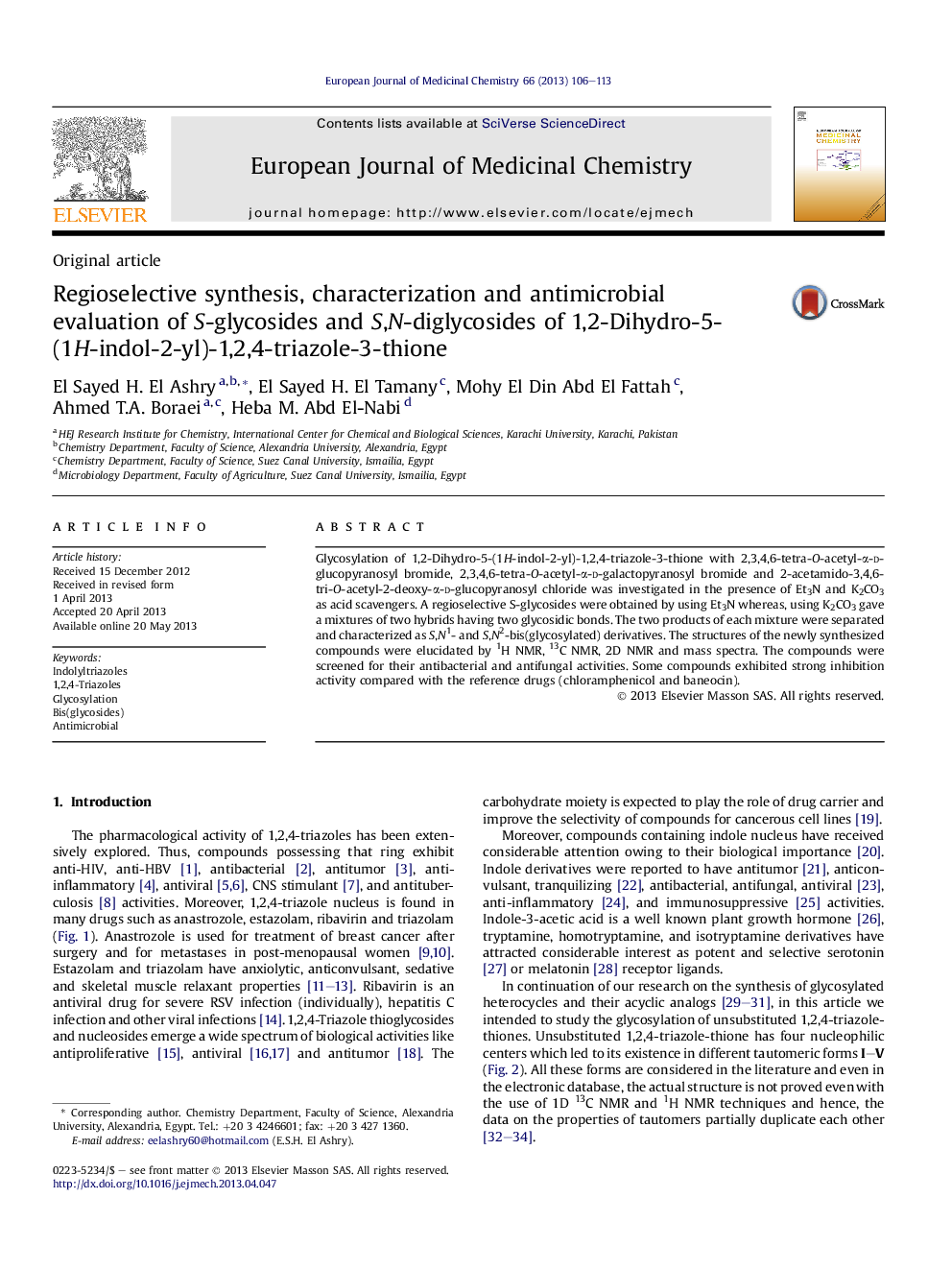| کد مقاله | کد نشریه | سال انتشار | مقاله انگلیسی | نسخه تمام متن |
|---|---|---|---|---|
| 1392711 | 1501150 | 2013 | 8 صفحه PDF | دانلود رایگان |

• Unsubstituted 1,2,4-triazole-3-thione was regioselectively glycosylated.
• New structures were confirmed using 1H NMR, 13C NMR, 2D NMR and mass spectra.
• The differentiation between the S,N1- and S,N2-diglycosides was done by 2D HMBC.
• Synthesized compounds were tested for some pathogenic bacteria and fungi.
Glycosylation of 1,2-Dihydro-5-(1H-indol-2-yl)-1,2,4-triazole-3-thione with 2,3,4,6-tetra-O-acetyl-α-d-glucopyranosyl bromide, 2,3,4,6-tetra-O-acetyl-α-d-galactopyranosyl bromide and 2-acetamido-3,4,6-tri-O-acetyl-2-deoxy-α-d-glucopyranosyl chloride was investigated in the presence of Et3N and K2CO3 as acid scavengers. A regioselective S-glycosides were obtained by using Et3N whereas, using K2CO3 gave a mixtures of two hybrids having two glycosidic bonds. The two products of each mixture were separated and characterized as S,N1- and S,N2-bis(glycosylated) derivatives. The structures of the newly synthesized compounds were elucidated by 1H NMR, 13C NMR, 2D NMR and mass spectra. The compounds were screened for their antibacterial and antifungal activities. Some compounds exhibited strong inhibition activity compared with the reference drugs (chloramphenicol and baneocin).
S-Glycosides and S,N-diglycosides of 1,2-Dihydro-5-(1H-indol-2-yl)-1,2,4-triazole-3-thione were regioselectively synthesized and tested for their antimicrobial activity against pathogenic human and/or plant fungi and bacteria.Figure optionsDownload as PowerPoint slide
Journal: European Journal of Medicinal Chemistry - Volume 66, August 2013, Pages 106–113